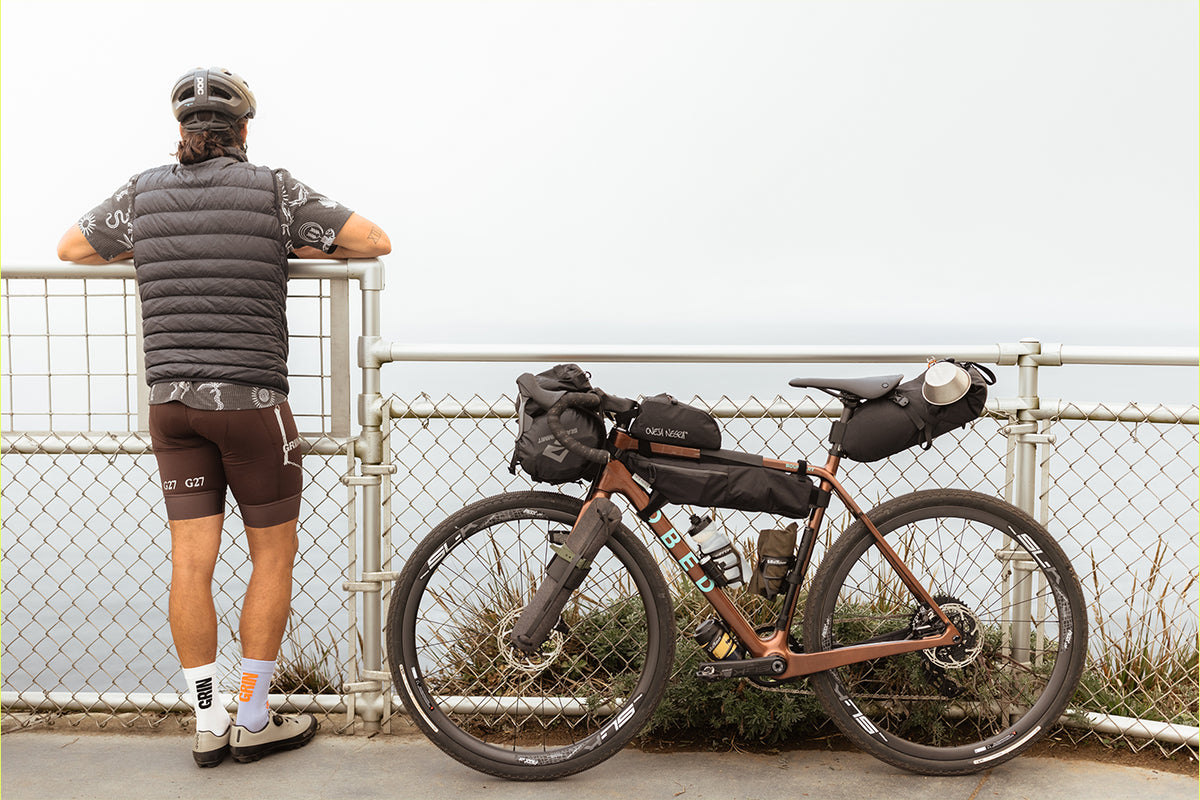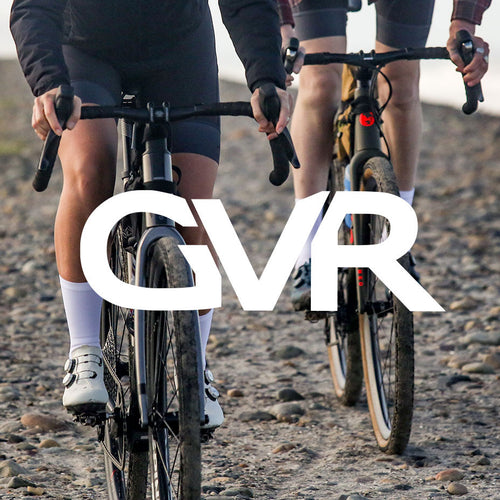Your Cart is Empty
Prepping for Unbound XL with Austin Sullivan

Contributed article from OBED Athlete, Austin Sullivan
So, you're gearing up for the XL, huh? Recently, I've had a couple of friends reach out about equipment and how to best prepare. I've responded to them individually, but I thought it would be more convenient to condense my advice into a single post. This isn't a completely comprehensive list, but it covers some key highlights to consider, even if you're starting at the Unbound start line for one of the shorter distances. Let's dive in.
350 miles, 10,000+ feet of vertical ascent, and a 36-hour time cutoff. It might sound a bit absurd to most people, and it is. So, let's talk gear.
The bike - GVR or an OBED bike, are certainly built for this kind of terrain. In all three instances I've lined up for the XL, I've ridden a GVR with Shimano Di2 drivetrains. Once with a 1x group and twice with a 2x group. I'm a fan of Di2; the shifts are crisp, consistent, and easy to execute. That last part might seem trivial, but in 2021 alone, I logged over 6500 shifts on the XL. As someone who has experienced nerve issues in my hands, Di2 is a huge relief. Another important aspect here is ensuring you have clearance for larger tires. The GVR clears 45c tires with ease, and I've even run 47c tires with room to spare for comfort. This brings us to the next piece of gear...

Tires - Ah, the most hotly debated topic among gravel enthusiasts. I won't claim that the Rene Herse tires I used in 2021 or the Teravail tires I used in 2022 & 2023 are the only options. However, I can confidently say that I've used tires at or above 42c for all my long-distance rides, and it's proven to be effective. The 2024 XL is returning to rougher roads north of Emporia, so consider opting for a bit more rubber for added security. Experiment with various tire pressures; perhaps invest in a digital gauge and gradually lower your PSI on each ride to find what works best for you. I've been pleasantly surprised by how smooth rough roads can feel when I drop into the low 30s PSI, without feeling bogged down as I initially expected.
Repair Kit - There are plenty of resources detailing what to carry for emergencies and mechanicals. Here are a few of my 'always carry' items and some things I've used in previous editions:
Dynaplug Racer Pro in a jersey or thigh pocket, along with a CO2 inflator for quick plug and air-ups.
2-3 tubes (I prefer the weight and size of Tubolitos)
Spare derailleur hanger
Multitool with chain tool and quick link
Spare bit of duct tape (wrapped around a pump)
A couple of zip ties of various lengths
Spare SPD cleat and bolts
Small paint stick for clearing mud (a stick also works surprisingly well)
Small bottle of tire sealant
Lights - Starting in the mid-afternoon and riding through the night requires more than just a couple of lumens. You'll need a light on your helmet. I've had great success with a Cateye Volt 1800 as my primary handlebar light and a Black Diamond headlamp gorilla-taped to my helmet. This combo is easy to use and allows for quick mode changes. I keep the Volt on low (500 LM), and with a double click of the button, it jumps to high for those rough patches where I need more light. A single click returns it to the previous mode. I also have a Cateye mount on my helmet to switch the light from bar to helmet duty if needed. For the headlamp, I use replaceable lithium batteries for more light than the Black Diamond rechargeable battery offers, and they're quick to swap out when needed. This setup has served me well for over four ultra-distance gravel events, ensuring I never run out of light and always feel comfortable at speed. If you're unsure about your light setup, opt for more lumens. I'm currently testing some setups from Exposure Lights, and they might just light my way on my next ultra. Make sure to spend some time riding at night, testing your lights to ensure they provide enough illumination for your comfort.

Clothing - Comfort is paramount. There's no secret brand of chamois or kit that works for everyone. I have plenty of chamois pads that are great for 3-4 hours but less comfortable for 7+ hours. Similarly, I have jerseys that are perfect for short rides but feel restrictive on longer hauls, particularly around my chest and armpits. Just as with getting comfortable with your lights and night riding, you need to be familiar with the clothes that will serve you well for a 20-36 hour effort. If that means switching bibs mid-race, then so be it. (I've been known to wear double bibs in the final hours of some events.) Lately, I've been using Chamois Butt'r Ultra, and it works wonders for me. It's more of a balm (think waxy) than a cream and stays in place much longer than traditional Chamois Butt'r. For those curious, I feel most comfortable in my Pactimo aero mesh jersey and Eliel cargo bibs. Just thinking about that combo puts me at ease. That's a good goal to have for a cycling kit, especially when you'll be spending 30+ hours in it.
Route - Spending a couple of hours studying the route will significantly ease your nerves about what to expect. A couple of hours might sound like a lot, but hey, you've got months to do it. Knowing the distances to water and gas stations, as well as what you like to eat from said stations, goes a long way. Find what works for you during training, and executing on race day will be smoother than the Flint Hills wind. One hack I recommend is creating an easy-to-read cue sheet for resupplies. I tend to list mile marker - store - hours of operation - mileage to go. The last column has come in handy when I've had to switch Wahoo units or split the ride into two, as the miles to go are usually more accurate than miles ridden.

When preparing for such a long event, I find it calming to focus on what I can control. The items listed above are exactly that. You can't predict if you'll get a flat, but you can be prepared to deal with it. Knowing that your lights will see you through whatever darkness comes your way is a huge relief. Feeling comfortable in your favorite kit is a dream. So, go out and practice, make mistakes when you're a couple of miles from home instead of on a dirt road outside Council Grove, Kansas. If you've never used a plug tool, give it a try on an old tire before pulling it off the rim. Poke a hole in it and see if you can plug it and get another ride out of it. The key is to get comfortable, eliminate the variables you can't control, and focus on executing regardless of what happens out there.
I hope this helps calm some nerves and gives you some focus points while building your fitness! Feel free to reach out to me on Instagram if you have any other questions! @gtsulli
Also in Stories

Transcordilleras: Cycling through Colombia's Andes
OBED athlete Austin Sullivan embarked on the formidable Transcordilleras journey in Colombia's Andes. Spanning 620 miles over 8 days, this challenging adventure wove through breathtaking landscapes, fostering connections and unforgettable experiences along the way.

From Sea to Sky: A Bikepacking Tale
The area above San Francisco has always been a place that keeps drawing OBED ambassador, Mike Pham, back. When it came to choosing his next bike-packing adventure the destination was a no-brainer...


